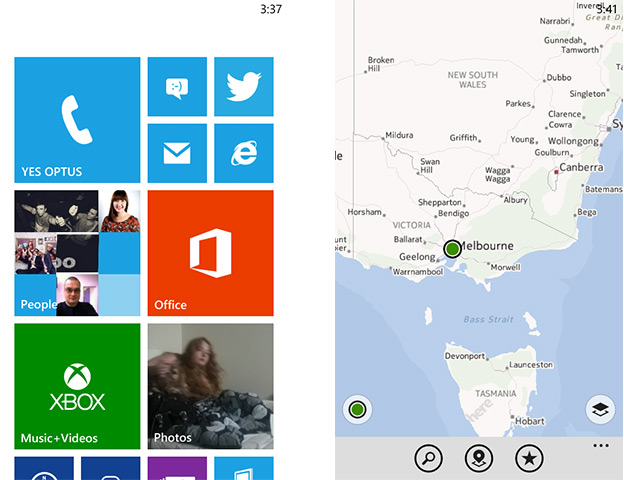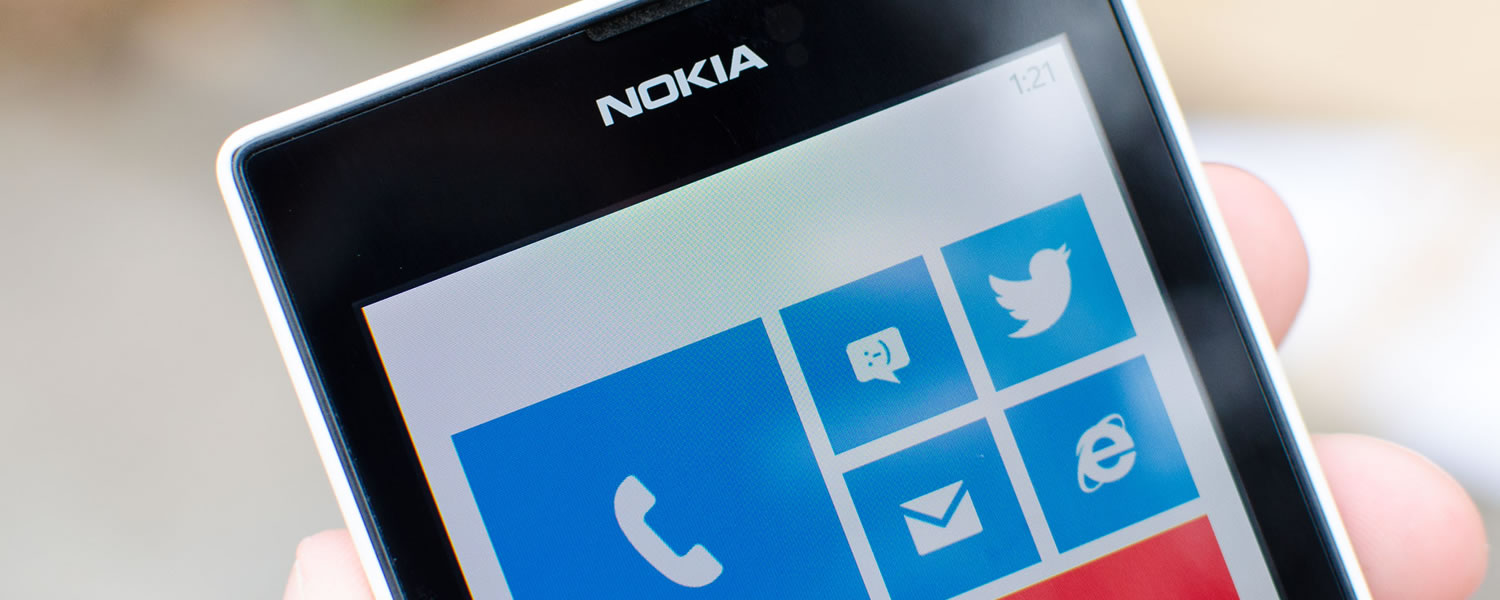Software, Camera
Out of the box, the Lumia 525 is running the latest version of Windows Phone 8 - Update 3 (GDR3) with Nokia's Black firmware update - so you're not missing out on the latest features. Many of the improvements in Update 3 and Nokia Black are geared towards high end handsets, such as support for quad-core SoCs, 1080p displays and RAW photography, although you will get minor features such as a driving mode and custom notification sounds.
The 1 GB of RAM included in the 525 gives you full access to the range of Windows Phone applications in the Store, the quality of which are improving every week. There are still times where Windows Phone apps are not as nice or well developed as their Android or iOS counterparts, but there is rarely a time when an app for a service simply isn't available.

Not much has been added to the stock Windows Phone experience on the Lumia 525. Out of the box, apps such as Nokia Beamer, Nokia Creative Studio, HERE Maps, Nokia Xpress and Zinio are installed, and of course, you get access to all of Nokia's other great apps such as Nokia Camera and Nokia Storyteller. Most of Nokia's standard inclusions are quite useful, so it's not like you're getting bloatware.
In the Lumia 525's settings there are a few additions that Nokia has made, including a handy storage checker that expands on the storage settings screen already included in Windows Phone. There are also options to block unwanted calls and SMS messages, which might come in very handy if you're constantly being harassed or spammed.
Aside from these minor additions, you're left with the usual ups and downs of Windows Phone. Some critical features - a notification center comes to mind - are still missing from the OS, but Windows Phone 8.1 will address many of these. The Lumia 525, like all Windows Phone 8 devices, will be upgraded to Windows Phone 8.1 after its release, likely in early April.
Camera
The rear camera on the Nokia Lumia 525 is a 5-megapixel 1/4" sensor featuring 1.4 μm pixels, paired with a 28mm effective f/2.4 lens. To cut costs, there's no optical image stabilization like Nokia's high-end handsets, there's no flash of any kind, and there's no front-facing camera. The lack of a front-facing camera will be especially annoying for those who enjoy frequent selfies, or video calls through Skype.
Simply put, the Lumia 525's rear camera is incapable of taking a decent photo, regardless of how perfect the conditions are. The camera unit itself is identical to the one used on the Lumia 520, meaning we're once again dealing with year-old hardware, and compared to newer 5-megapixel sensors it falls well behind in nearly every aspect.
To start with, even when the scorching Australian sun is beating down producing perfect conditions, the Lumia 525 can't capture a photo that's as vibrant or as saturated as it should be. Colors look muted and white balance is often well off what it should be, which is nearly always combined with pronounced washing out. I tried my absolute hardest to get a good photo out of the 525, but ultimately failed.
Full resolution quality from the 1/4" is worse than average, with noticeable post-processing artefacts attempting to reduce noise and sharpen each image. There is essentially no room for cropping and zooming images produced from the Lumia 525, because if you do, you'll start to notice artefacts with ease. The lens can focus closely and reasonably quickly, but the poor sensor quality and unpleasant bokeh makes this camera unsuitable for any decent macro photography.
In dimmer lighting conditions, even more problems are added to the Lumia 525's rap sheet. The camera is forced to use higher ISOs, which in turn produces more grain and more artefacts. On top of this, longer shutter speeds are used, which can make images blurry if you're not holding the device with a perfectly steady hand. Forget night-time photography too, because a lack of flash and a weak setup means images in dark conditions are either too dark or very blurry.
Video recording is capped at 720p from the rear camera as the Snapdragon S4 SoC doesn't support 1080p encoding. Videos are filmed at 30 frames per second with an overall bitrate of 10 Mbps, including stereo audio, and encoded in H.264. Quality is just as good as you'll get from still images, so there's really no quality loss when recording, however the lack of stabilization makes handheld videos quite shaky. Audio is crisp, but nothing to write home about.
It's clear that Nokia has cut corners with the Lumia 525's camera to keep the handset's price down, and as a result, it should only be used sparingly; definitely not for any major moments or family holidays. Photos produced from the 5-megapixel camera are barely usable, so perhaps don't throw out that point-and-shoot just yet.










